Results
2,284 Results
Loading more Results ...
Loading more Results ...
| Tokaj-Hegyalja |
Description to Tokaj-Hegyalja
Probably Hungary's best-known wine is named after the town of Tokaj in the north-east near the borders with Slovakia and Ukraine. The word "Tokaj" is probably of Hunnic-Turkish origin and means something like "forest by the river". It was first mentioned in a chronicle at the end of the 11th century, where the crossing of a Cuman army over the River Tisza at "Thocoyd" is described. King Béla IV (1235-1270) established Hungarian viticulture on a larger scale, with the first upswing in the Tokaj region occurring in the 13th and 14th centuries. It is no longer possible to determine when the very first Tokaj Aszú was produced, but it is certainly one of the first wines to be made from botrytised noble sweet berries.
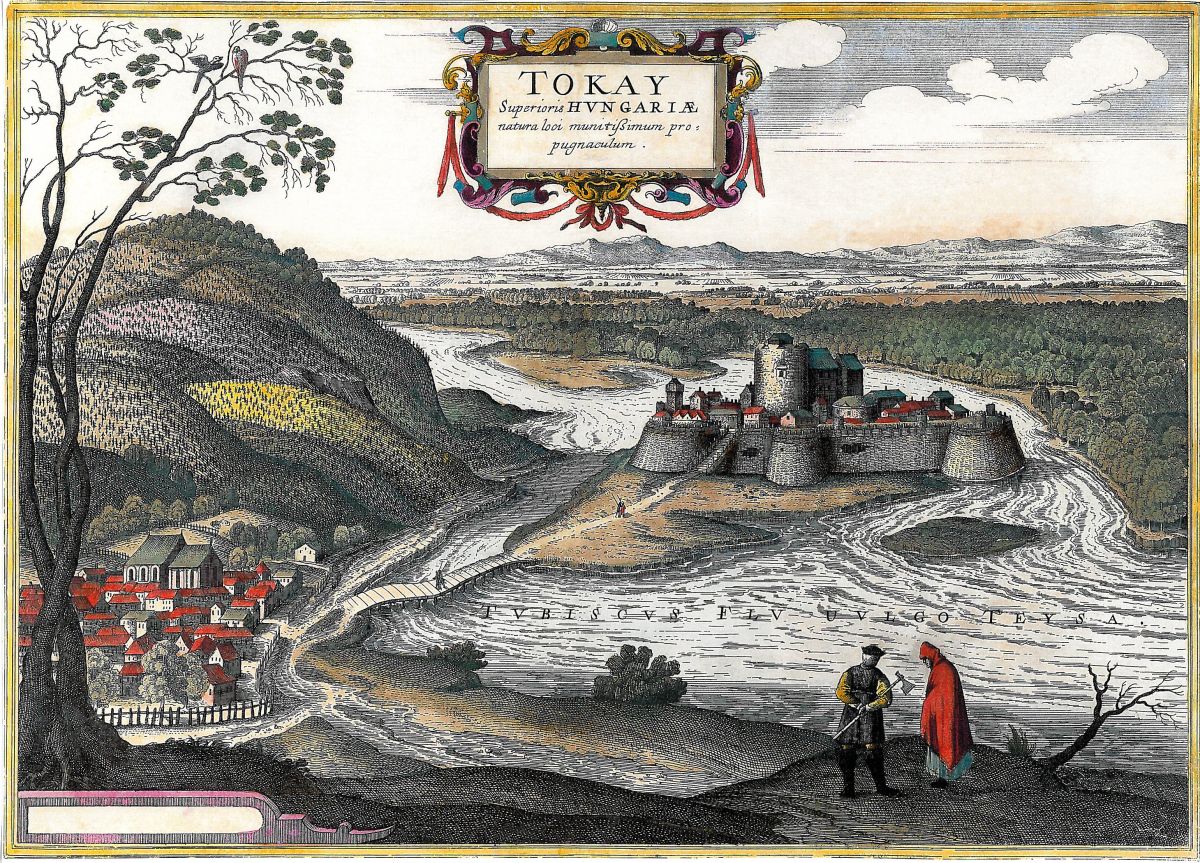
The picture shows the vineyards of Tokaj in the second half of the 16th century (graphic by Georg Hoefnagel). The fortress known as Rákóczi Castle was demolished in 1705 by order of Francis II Rákóczi (1676-1735).
The history of Tokaj
Numerous legends surround the "invention" of Tokay. It is said that a Tokaji Aszú was presented to Pope Pius IV (1499-1565) at the Council of Trent in 1562, whereupon he remarked: "Summum pontificem talia vina decent!" ("Such wine belongs on the papal table"). Aszú wine is often first mentioned in writing in 1571, more precisely in a document from the inventory of the Garay family dated 15 May 1571. The term "Vinum passum-aszu szeőleő bor" (wine from aszú berries) appears as early as 1590 in the posthumously published work "Nomenclatura" by Balázs Szikszay Babricius (+1576). And in 1635, a list of the Rákóczi cellar mentions "7 barrels (the Gönc barrel was the standard size) and 2 Àntalag (= small barrel) Aszúszőlő-Bor" (= Aszú grape wine). The estates of Prince György Rákóczi I (1600-1660) also included the Tokaj-Hegyalja region.
The birth of 1651
When one of the numerous Turkish raids threatened once again around 1631, the court preacher in charge, Máté Szepsi-Laczkó (1576-1633), decided to wait with the grape harvest until the danger had been averted. During the long and sunny autumn, the berries began to shrivel and noble rot set in. The winegrowers were instructed to press the grapes from the Oremus vineyard separately during the harvest. At Easter 1651, the first "Tokajer Ausbruch"(dry berry selection) was served to Princess Zsuzsanna Lorántffy. The Hungarians therefore still honour Szepsi-Laczkó today as the "inventor of Aszú". A national evaluation for the Hungarian wine regions dates back to 1707. The regions were divided into five categories or quality classes. Only the Tokaj-Hegyalja region was classified as first class. It was at this time that the great importance of the area as a valuable commercial product began to be recognised.
Famous connoisseurs
From the 17th century onwards, Tokaj played an important role at many European courts. Royal connoisseurs included Franz Joseph I, Maria Theresa, Frederick the Great, Victoria I and William II. Many famous writers, poets and composers mentioned Tokay in their works. These included Ludwig van Beethoven, Johann Wolfgang von Goethe (Faust), Heinrich Heine (Book of Songs), Friedrich von Schiller (Wallenstein), Franz Schubert, Bram Stoker (Dracula), Johann Strauss Sohn (Fledermaus), Theodor Körner (in a wine song), Nikolaus Lenau (Mishka on the Tisza) and Voltaire (Proof of God).
In 1733, the Russian Tsar's court set up its own wine purchasing commission in the town of Tokaj. Tsarina Elisabeth Petrovna Romanova (1709-1762) ordered a delivery of 375 barrels by letter on 8 November 1745 and noted as a postscript: "And if there is even a possibility, send at least three antal (barrels of approx. 75 litres) by messenger, which I cannot get anywhere here, where I cannot be without the wine, as you also know" .
Vinum Regum - Rex Vinorum
Under her successor Catherine the Great (1729-1796), supplies were escorted to her residence in St. Petersburg by a special Cossack detachment. The French Sun King Louis XIV (1638-1715) awarded it the title "Vinum Regum - Rex Vinorum", meaning "Wine of Kings - King of Wines". Tokay was also often used as a diplomatic weapon. When the Turks were driven out of Budapest in 1686, Prince Ferenc Rákóczi II (1676-1735) wanted to establish the now liberated Hungary as an independent kingdom. In order to ally himself with Louis XIV, he sent him a noble Tokay. Emperor Franz-Joseph I (1830-1916) also used the wine for diplomatic purposes, greeting Queen Victoria (1819-1901) with a consignment of Aszú every year on her birthday.
The heyday
The heyday of the Tokaj wine trade was during the heyday of the ruling Rákóczi and Bercsényi families in the 17th and 18th centuries. During this period, most of the countless wine cellars (185 were counted in Tokaj alone) were dug into the loess soils, which were ideal for this purpose. From the last third of the 18th century, there was a decline, on the one hand due to warlike events, as a result of which the vineyards remained uncultivated or were destroyed, and on the other hand due to economically imposed measures, especially during the reign of Maria Theresa (1717-1780). Only as much Tokaj wine was allowed to be exported as Austrian wine was imported. In 1745, the ruler of the Russian Tsarina Elisabeth (1709-1762) sent 600 bottles. Pope Benedict XIV (1675-1758) also received a consignment and thanked him with an extraordinary quotation.
Forgeries
Wine adulteration, which took place on a large scale in many countries in the 19th century, also contributed to Tokay's bad reputation. There were even detailed recipes for this, for example in a work from 1875: Take 100 litres of normal wine; 15 litres of sultana essence; 0.5 litres of bitter almond essence; 0.1 litres of elderflower essence; 4 kg of sugar; 0.5 kg of caramel; 4 kg of glitterin and 6 litres of 80 per cent alcohol. Such wine could be ordered by the wagonful from a wine merchant in Vienna-Döbling at a ridiculously low price. During the communist period of government after the Second World War, the Tokaj culture suffered a total decline. Almost all the larger wineries were nationalised. Tokay was produced cheaply and as a mass-produced wine. From the beginning of the 1990s, there was a new beginning and Tokaj experienced a rebirth.
The Tokaj region
The defined boundaries for the right of designation of origin in Hungary have changed several times over the centuries. The oldest documented demarcation dates back to 1641, when 12 municipalities belonged to the narrower Tokaj region. Today's Tokaj wine-growing region was defined by the Hungarian Wine Act in 1997 and also registered in the Treaty of Lisbon. The triangle-shaped region, which is around 60 kilometres long and 30 kilometres wide, is located in north-eastern Hungary on the border with Slovakia and Ukraine and comprises the four towns of Sárospatak, Sátoraljaújhely, Szerencs and Tokaj, as well as 23 smaller municipalities.
Slovakia
Surprisingly, there is also a Tokaj-like wine outside of Hungary. This special status is held by an area in Slovakia that borders directly on the Hungarian Tokaj-Hegyalja region. Here, a Tokaj-style wine is produced in the three municipalities of Kistoronya, Szõlõske and the Slovakian part of the municipality of Sátoraljaújhely. Slovakia invoked the wine law from 1908, when this area still belonged to Hungary. After years of dispute, the two countries agreed in 2003 that the wines produced within the 565-hectare area could bear the Slovakian designation of origin "Tokajský". An expansion to almost 1,000 hectares is planned.
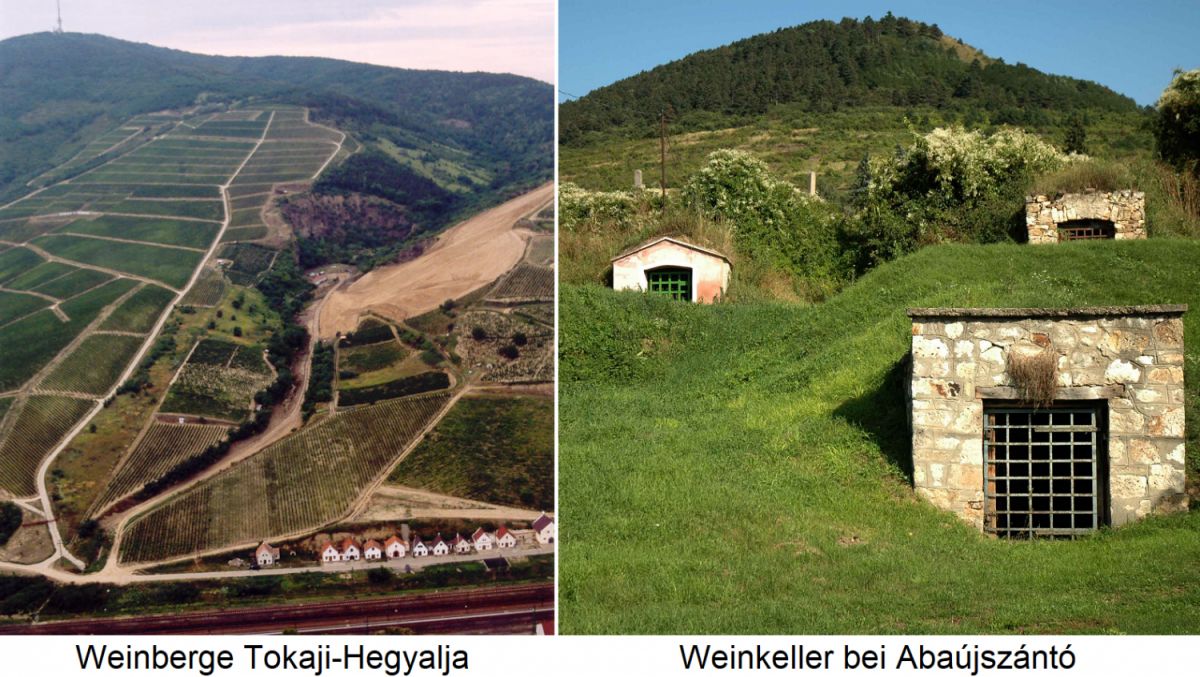
Hungary
The eponymous town of Tokaj lies at the confluence of the Tisza and Bodrog rivers near Kopaszhegy (Kahlberg at 512 metres). The area is bordered by the three rivers Hernád, Bodrog and Tisza. These influence the specifically humid climate, which favours botrytis (Hungarian: nemespenész). The climate is extreme, with a cool and dry spring followed by a hot summer and then an initially wet, later dry and long sunny autumn. The vineyards cover around 5,700 hectares of vines. Only wines from the Furmint (60%), Hárslevelű (25%), Muscat Lunel/Sárga Muskotály (Muscat Blanc), Kabar, Kövérszőlő(Grasă de Cotnari) and Zéta varieties are allowed to carry the "Tokaji" label. Wines from other varieties, such as Chardonnay, may only bear the geographical indication "Zempléni g.g.A."(country wine). The best and best-known single vineyard sites are mainly found in the municipalities of Bodrogkeresztúr, Mád, Rátka, Tarcal, Tállya, Tokaj and Tolcsva.
First winegrowing regulations
The first surviving winegrowing regulation dates back to 1641, when a 48-point regulation was issued in the municipality of Mád. Under Prince Ferenc Rákóczi II (1676-1735), a detailed wine-growing regulation was issued in 1700. At that time, aszú production was probably simpler than it is today. A document from 1758 states: "After the aszú berries have been infused with must, they are stirred well together and the vat is not covered too tightly. After three to four days of fermentation, when the sweet juice of the berries has dissolved in the must, the mass is pressed out by hand and the wine is left to ferment."
Measures in 1904
In 1904, the "extraordinary regulations for the Tokaj wine region" were published, which included a geographical demarcation with a total of 33 localities, the mandatory requirement for the use of oak barrels and the absolute ban on mixing Tokaj wines with wines from other regions. Furthermore, only those wines whose vines came from "mountainous vineyards" (i.e. on slopes) could be labelled as Tokaj. The wine law from 1997 declares Tokaj-Hegyalja to be the only "closed" wine-growing region in Hungary. Within this area, this means special protection and special regulations regarding the vinification, treatment and distribution of Tokaj.
Grape varieties have been cultivated and wines produced all over the world under the misleading name Tokaj, Tokayer or similar. In Friuli-Venezia Giulia in Italy, there was the grape variety Tocai Friulano (Sauvignonasse) and in Alsace in France a Tokay d'Alsace as a synonym for Pinot Gris. Overseas, not only Tokay but also other well-known wine-growing regions such as Bordeaux have always been misused. All of these designations had to be changed from 2007 following a decision by the European Union and international agreements. The origin-protected name Tokaj may only be used for the Hungarian and Slovakian originals.
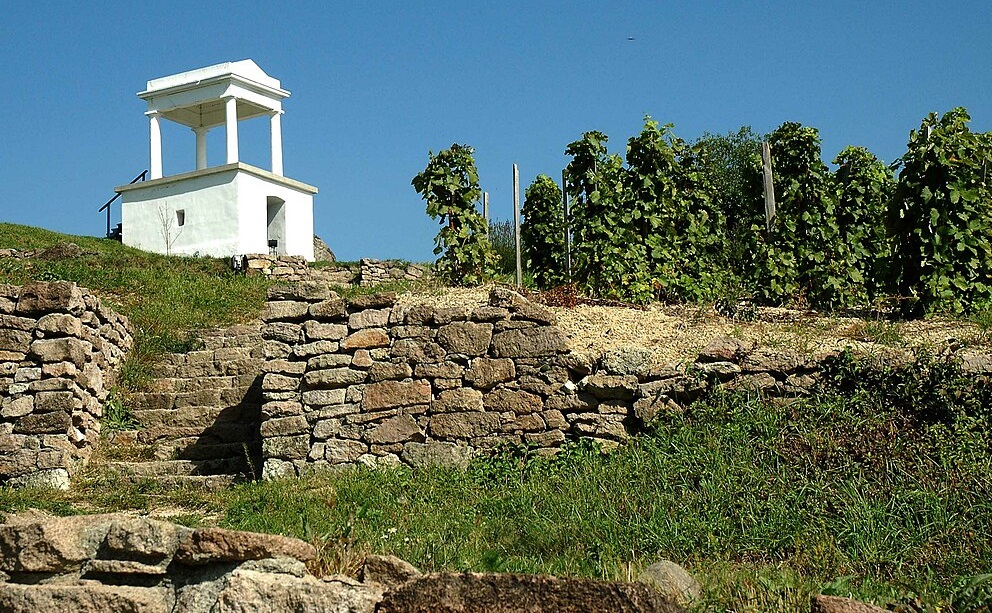
The picture shows terraced vineyards near the town of Tokaj on the River Tisza in north-east Hungary in Borsod-Abaúj-Zemplé county. It is the centre of the Hungarian part of the Tokaj wine region, where the famous wine is grown.
The Tokaj wine types & production
A revised product specification came into force in 2017 (although further changes are expected). None of the wines may be bottled outside the wine-growing region. The addition of grape must for sweetening purposes is prohibited. For the Tokaj specialities Aszú, Eszencia, Szamorodni, Fordítás and Máslás, alcohol increase and acid changes (deacidification or acidification) are prohibited. In addition to sparkling wine, the following types of wine may be produced:
- Aszú
- Aszú-Eszencia (was eliminated in 2013)
- Eszencia
- Szamorodni (dry and sweet)
- Fordítás
- Máslás
- Késői Szűret (late harvest)
- White wine
Aszú (Tokaji Aszú in Hungarian, Tokajský Výber in Slovenian)
Aszú or Tokaji Aszú is the famous, classic Tokaji wine. It is made from overripe, botrytis-infested berries that are selected individually by hand. The term is derived from aszalt (dried or parched). In principle, Aszú corresponds to a Trockenbeerenauslese. According to the traditional method, the berries are collected in 25kg puttonyos (butts). The grapes are then pressed into a dough-like pulp using a basket press (rarely even today with the feet), whereby the grape seeds (which contain a lot of tannins ) must not be crushed.
At the same time, a grape must is obtained from non-botrytised grapes of the same vintage, which is added to the paste either unfermented, already fermenting or as a fermented base wine. The grape seeds floating on top are removed. The mixture is left to macerate for 18 to 48 hours with stirring. This releases the sugar from the grapes. After pressing, fermentation begins. The pressed pulp is used for Fordítás (pomace wine).
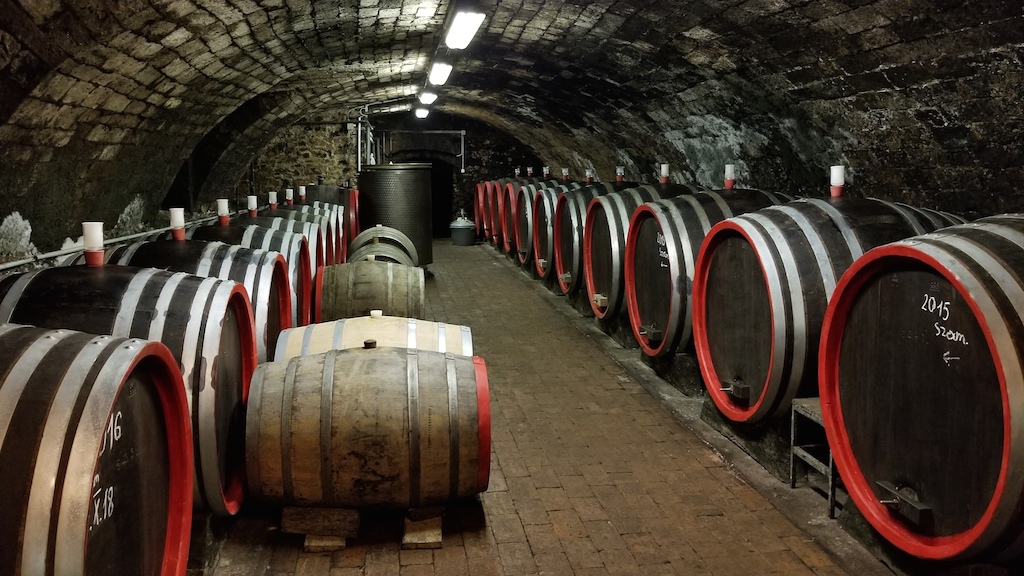
In the past, the usual measure for the base wine or grape must was a Göncer barrel (136 to 145 litres), or Szerednyeer barrel (200 to 220 litres). The higher the number of puttonyos/butts used, the sweeter and more concentrated the wine became. The prescribed ageing period was "number of puttonyos plus 2", so for a 6-litre puttonyos this meant 8 years of ageing. In the old days, one to five-butt Tokaj Aszús were produced, but later they were reduced to two to five-butt Tokaj Aszús. Around 1790, the six-butt Aszú was created and the two-butt Aszú was discontinued because the quality of good Szamorodnis was very similar. The two-butts were still produced until the second half of the 20th century. From 1997, only three- to six-butt wines with a residual sugar content of at least 60, 90, 120 and 150 g/l were produced.
There have been fundamental changes since the 2013 vintage. The designation "Tokaji Aszú" is now only permitted for 5 or 6 puttonyos. The base wine must come from the same vintage as the aszú berries, meaning that the wines are 100% true to the vintage. No more wine or must quantities are prescribed (like the Göncer barrel used to be). Instead of wine (which gives more body and alcohol), grape must or grape must already in fermentation (which gives more fruitiness and flavour) may also be used.
The wine must mature for at least 18 months in traditional large wooden barrels or barriques and may not be marketed before the second year after the harvest. Due to this long storage period in the air-permeable wooden barrels, most wines can be described as slightly oxidative. The specified analytical values for a Tokaj Aszú are
- at least 19% potential alcohol content
- at least 120 g/l residual sugar for 5 puttonyos or 150 g/l for 6 puttonyos
- at least 9% actual alcohol content (stated on the label)
- at least 6 g/l total acids
- maximum 2.1 g/l volatile acidity
The earlier variants "Tokaji Aszú 3 Puttonyos" and "Tokaji Aszú 4 Puttonyos" may no longer be labelled as "Aszú" or "Tokaji Aszú". A wine with at least 45 g/l residual sugar can be labelled as Késői Szüret (late harvest) or as Szamordni édes (sweet). The number of puttonyos can be stated on the bottle label for all of them.
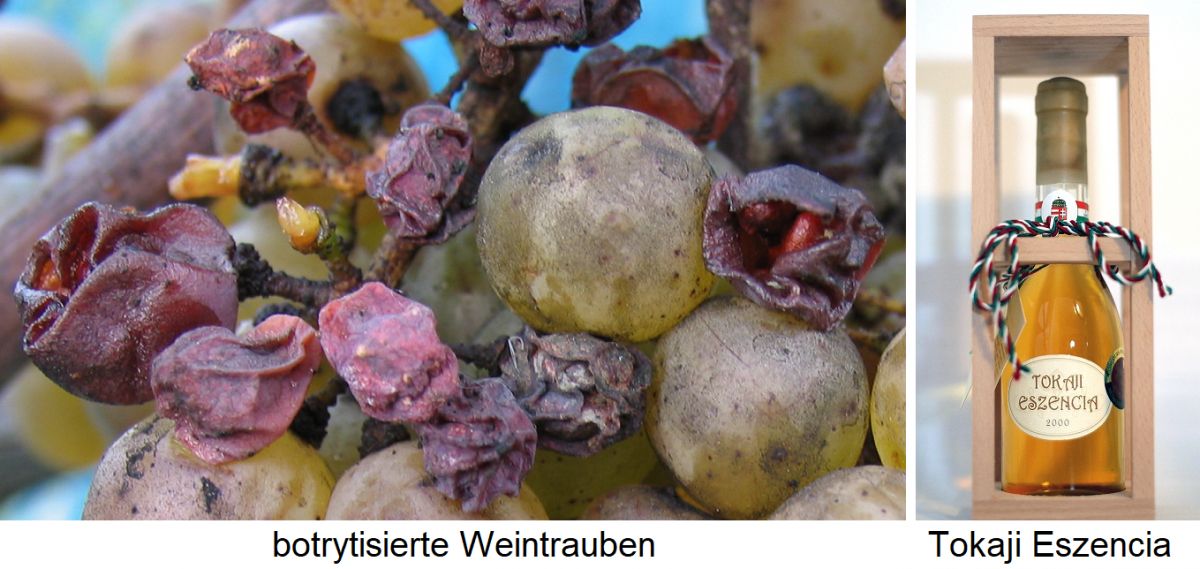
Eszencia
This speciality, also known as nectar, was first mentioned in 1707. In the 19th century, it was referred to in German-language literature as "Tokayer Ausbruch Essenz". In the past, eszencia was not considered a wine at all, but rather a medicine. In most cases, the eszencia was also "returned" to the aszú (if this was not done, it was referred to as a "castrated aszú"). This is still practised by most wineries today.
The berries destined for Tokaji Aszú are left to ferment slowly free-run must without being pressed first. Although the fermentation for Eszencia often lasts several years, the minimum alcohol content of 5% required by the EU is rarely achieved. However, Hungary has obtained an exemption for this speciality. The actual alcohol content is usually very low and lies between 1% and 8% by volume. The wines must have at least 27.75% potential alcohol content and at least 450 g/l residual sugar. The dark-coloured wine has a honey-like consistency. This precious rarity is often only served by the glass in the wineries.
Aszú-Eszencia
This quality level was only created in the 20th century. The intention was to create an additional level between the 6-butted Aszú and Eszencia. In the Hungarian wine law of 1977, it is defined as "outstanding Aszú wine from a first-class vineyard and an excellent vintage". At least the same conditions applied as for Aszú. The botrytised berries had to have a sugar content of at least 180 g/l. The meaningfulness of this has always been disputed, as the name has often led to confusion with Escenzia. The variant was therefore eliminated from the 2013 vintage.
Szamorodni
The name "Szamorodni", first mentioned in 1828, means "as grown" in Polish. This means that there is no selection of the most suitable berries, as is usual with Aszú, but that the grapes are harvested and processed as they have grown. Polish traders had learnt to appreciate the wine known at the time as "Főbor" (German for "main wine") and spread the new name when marketing it. However, there should be a proportion of noble rotten berries, on which the quality and sweetness depends. The wines can therefore be vinified dry (száraz) or sweet (édes). They must mature for at least 6 months in wooden barrels. Some producers age them oxidatively.
Fordítás
This means "turn" in German. The pressed aszú dough is "turned" (stirred) and then infused with grape must, fermenting grape must or wine from the same vintage that is still fermenting and fermented. This is a marc wine. The wine must mature for 6 months in wooden barrels.
Máslás
This wine has been known since the middle of the 16th century. The name is derived from the Polish word "Mászló" (butter) because the wine has a buttery flavour (for Polish influence and the origin of the name, see Szamorodni). It is a pressed yeast wine. The lees (full lees) of Aszúwein or Szamorodni is infused with must, fermenting must or fermenting wine from the same vintage. The wine must mature for 6 months in wooden barrels.
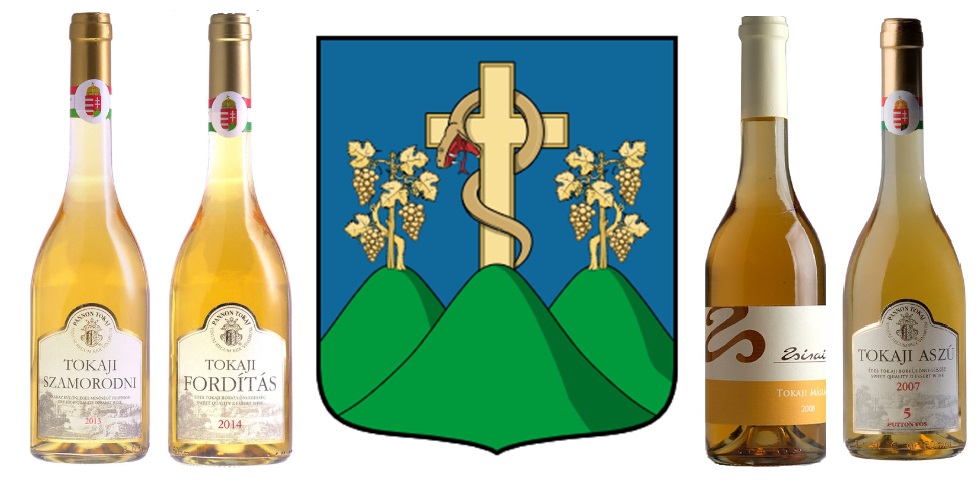
The Tokaj producers
Well-known producers of Tokaj include Árvay, Balassa, Barta, Béres, Bodrog-Várhegy, Carpinus, Demeter Zoltán, Dereszla, Disznókő, Dobogó, Erzsébet, Füleky, Gizella, Grand Tokaj, Gróf Degenfeld, Hétszőlő, Höldvölgy, Juliet Victor, Kikelet, Kardos, Lenkey, Mád Wine, Megyer, Pajzos, Pelle, Pendits, Samuel Tinon, Kikelet, Tokaj Nobilis and Zsirai. The "Tokaj Renaissance" association, founded in 1995, is dedicated to the cultivation and culture of wine.
The following slogan can be found on a label: Aki e üvegböliszik annak kivantatik, hogy a Borok Kiralyanak aranyfenye emlekeztesse a hegyaljai tajra, ahol immar ezredik eve ragyog a szölöt ökere a Nap! Kivantatik, hogy a Kiralyok Boranak, legendas gyogyhatasa kedves egeszsegere valjek). In German this means: "Whoever drinks from this bottle, may the golden lustre of the king of wines remind them of the Hegyalja landscape, where the sun has been shining on the vines for a thousand years now. May the legendary healing effect of the wine of kings be transferred to his health". The Tokaj region was finally declared a UNESCO World Heritage Site in 2002.
Source: Kristian Kielmayer
Tokay region: By Georg Hoefnagel - Own scan, Public domain, Link
Vineyards Tokaji-Hegyalja: by Unknown, CC BY-SA 2.5, Link
Wine cellar: By Verita - Own work, CC BY-SA 3.0, Link
Vineyard terraces: by MyName(Verita) - Own work, CC BY-SA 3.0, Link
Barrel cellar: Tokaj Classic
Grapes: by CrazyD - Self-photographed, CC BY-SA 3.0, Link
Eszencia: by Eszencia.jpg, CC BY-SA 3.0, Link
Tokaj coat of arms: by Madboy74, Public domain, Link
find+buy for Tokaj-Hegyalja 14
Recent wines 63
 Kincsem Kastely
— Tokaj-Hegyalja
2016 Furmint trocken
Up to 30.00 €
Kincsem Kastely
— Tokaj-Hegyalja
2016 Furmint trocken
Up to 30.00 €

 Kincsem Kastely
— Tokaj-Hegyalja
2015 Hárslevelü lieblich
Up to 20.00 €
Kincsem Kastely
— Tokaj-Hegyalja
2015 Hárslevelü lieblich
Up to 20.00 €
